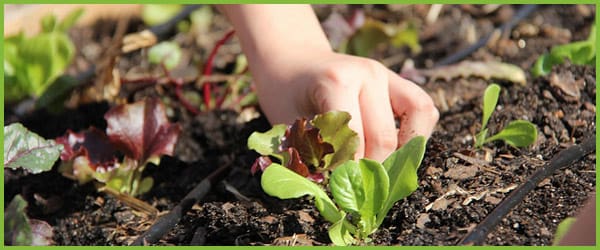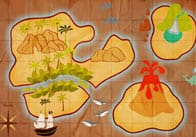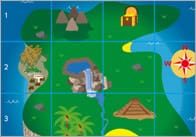Gardening in Early Years Settings


The eforeenefits of gardening with young children (or any children for that matter) are enormous. This goes without saying really but it’s always nice to have a study to back up your theories…A 2010 study commissioned by the Royal Horticultural Society (RHS) found that children in schools that encouraged gardening became more resilient, confident, eager to learn and have healthier life styles. It also found that gardening had a positive impact on children’s literacy and numeracy development and that it led to a more active, inquisitive approach to learning and improved problem solving skills.
If you’re looking to incorporate gardening in to your teaching then you may find this list of UK sowing and harvesting times for many popular vegetables useful: //www.gardenaction.co.uk/fruit_veg_diary/veg_planner.asp
However, before you get to the point where you can actually start growing, you may need to make some changes to your outdoor area. If that is the case then you may find this guidance from the RHS useful:
“1). Growing areas:
Have a growing area that the children can grow annual flowers and vegetables each year so the garden is fresh and interactive. Annual flowers such as nasturtiums, sweet peas and sunflowers can create living decorative screens along the boundaries of the garden. Climbing beans, peas and tomatoes and gourds can create edible fences. Raised beds or planters are advantageous in an early years setting – the plants are at a level that is easy for children to work with and out of the way of running traffic or ride-on traffic.
Fruit such as apples, raspberries and strawberries provide fresh fruit for harvesting by the children and can be planted to create edible hedges and screens to divide the garden space. Hanging baskets and planters are good for strawberries and tomatoes.
2). Digging area
When growing with children, it’s a good idea to have a separate digging area available for children to practice with tools and techniques, filling up pots and pipes with soil and water…
3). Sensory plants and natural materials
Sensory plants are simple plants that have particular features that heighten your senses. Herbs that give off a smell when rubbed, soft hairy leaves of grasses or lambs-ear that tickle you when touched. Rough or smooth bark of birch or cherry trees…Grasses offer movement and texture. Different surface materials can increase the sensory nature of the garden. Access to soil, sand, stones, pebbles, bark, pine cones and other tree seeds and crunchy leaves all provide different sensations when touched and allow children to explore and play with natural materials.
4). Trees and living willow structures
Trees and living willow structures provide useful shade and added other interest in the form of autumn colour, crunchy leaves, textured bark, spring catkins and autumn seeds. Create a woodland feel by renovating overgrown shrubs – raising the canopy, so children can play underneath. Leave wooden poles and sticks for children to make their own dens.
5). Wildflower – Grassy areas.
Leave some grass to grow long and plant with wildflower plants. Cut a circular path through the grass so children can enjoy the experience of running through the grass and experiencing the flowers and wildlife that are there. Mounds and hollows can create the feeling of more space in a small area.
6). Habitat piles and bug hotels
An easy addition to any early years settings – piles of logs or pallets filled with different recycled materials. (See RHS Campaign for School Gardening website for details of how to make this)…
7). Water and ponds
Water offers great excitement and fun for children as well as sound and movement. Water provides a home for wildlife which in turn adds a huge learning potential to your garden setting. However, there are obvious health and safety issues surrounding this. Ponds must be fenced off (seek your local authority advice on this). You can cover a pond with metal grid so that children are unable to fall in. Alternatively, there are safe water features using a pump and re-circulated water bubbling through pebbles or round metal balls that offer interest without the risks that come with deeper water.
8). Bird boxes, feeding stations and bird baths
Bird boxes can encourage birds to nest in your early year’s garden, if sited away for the busy area. Children can watch the movements of the parent birds. A camera could be placed inside the bird box…
9). Compost heap and Leaf mould bin
For sustainable gardening have a compost heap for all your fruit and vegetable snack waste and all the garden green waste. Children can observe the life that surrounds the compost and put the compost back onto the garden. Make a Perspex front to your compost – so children can see the mini-beasts at work. Place a tube through the middle of the compost so children can feel the heat created by the composting process. Collect
leaves in a separate leaf mould bin.
10). Potting shed and tool store
If room allows, a potting shed is a great resource for children to work in for sowing seeds and potting up plants. It also acts as storage for tools. A water butt can be added to collect rainwater from the roof.”
If you’re looking for more tips and advice for gardening with children then I would recommend Planning for the Early Years: Gardening and Growing by Alistair Bryce Clegg.
Early Years Gardening Products
Before I go on to discuss a few gardening products that could work well in early years settings I thought I’d draw your attention to the fact that the Woodland Trust is currently offering free tree packs for schools. From what I gather every UK school is guaranteed a pack of 60 young saplings (around 20-40cm high) upon application. However, if certain criteria is met then some schools may be eligible to receive as many as 420 saplings. To commemorate the Queen’s Diamond Jubilee, each pack will contain a Royal Oak Sapling, grown from seeds gathered from Royal Estates. It sounds like a really great initiative so get your application in and start digging!
Whatever you may decide to plant you will obviously need some sort of water supply in your garden. A couple of large water butts usually does the trick (especially during a hose-pipe ban). However, it’s also a good idea to have some smaller jerry cans like these ones available through Mindstretchers for children to be able to transport water to different parts of the garden. Needless to say watering cans and small water sprays are also essential as are basic gardening tools. These squishy buckets (again from Mindstretchers) could also be very useful when gardening and this Seedling growing unit could help when growing plants from seed.
Raised beds are a fantastic way of growing things, particularly in early years settings as the plants are positioned at a child friendly height and are removed from the danger of being trampled by little feet or wheeled vehicles. These interlocking grow beds are relatively cheap and easy to build. An even more cost effective solution would be to make your own raised bed using some pressure treated timber connected together with these rather innovative brackets.
TTS have developed a planter with a transparent Perspex panel so that children can see deep rooted plants and some vegetables. Once you have your flower bed / vegetable patch in place you could set up a timelaps camera near a particular plant so that children can look back at its development. Beans will sprout and daffodils will bloom in a matter of minutes or seconds, reinforcing the child’s learning.
It’s obviously really important to introduce children to the idea of recycling and reusing materials from a very young age so setting up a composting area in your garden is a must. This wormery has a clear plastic case so that children can observe worms in action. If you’re looking for a more robust composting solution you could go for a Compost tumbler. A compost tumbler will speed up the composting process and will make it an even more interactive process for the children as they can take turns to rotate the drum.
Popular Teaching Resources
Stay Up To Date
Sign up for our newsletter and we’ll let you know when we create new early years resources.





